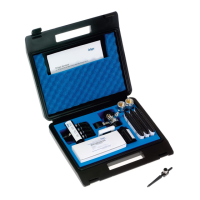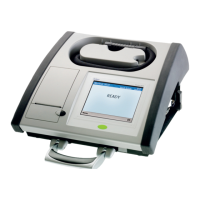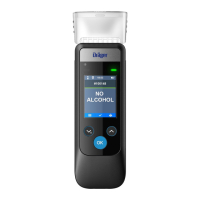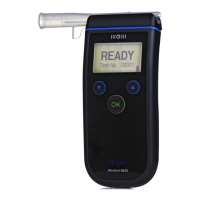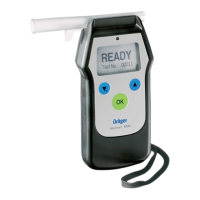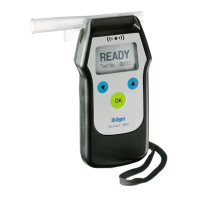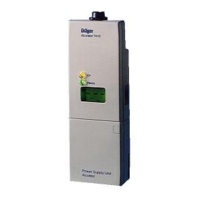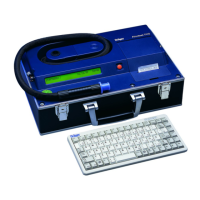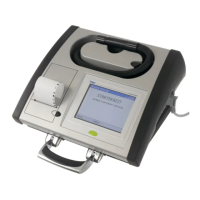24
Before Use
Prepare measuring device
● Clean connection of the compressed gas supply (blow out with oil-
free and grease-free air).
● Clean the measuring device. It must be free of particles and dust.
● Unscrew the protective cap
and connect the pressure
reducer with the connection
of the compressed gas
supply (1). Do not use a tool
for pressure reducers. Only
use your hands to make the
connection. If necessary,
use adapters: see “Technical
data” on page 35.
● Connect the measuring
device (2) to the pressure
reducer (plug connection).
High pressure system:
● The pressure reducer is
preconfigured to 8.5 bars.
Low pressure system:
● In cases of alternating
primary pressures from 3 to
15 bars, the pressure point
(3 bars) must be readjusted
on the pressure reducer's
handwheel. Check the
pressure gauge setting.
NOTICE
Only use a device if it is clean.
● Insert the bubble test hose in
the corresponding test
connection (3) of the
measuring device.
● Dip the other end of the
bubble test hose (4) in a
container full of water.
● Slowly open the compressed
gas supply valve and clean
the compressed gas system
(disperse compressed gas).
In case of regularly
maintained systems:
2 to 3 minutes.
For other systems:
5 to 6 minutes.
● Count the rising bubbles:
Severe build up of bubbles on CO
2
, CO, nitrous gases, H
2
S and SO
2
test connection. In case of little or no bubble build up, clean the
device, see “Cleaning” on page 32.
Severe build up of bubbles (uncountable) on oil and H
2
O test
connection. In case of little or no bubble build up: clean the device,
see “Cleaning” on page 32.
●Close valve.
01021765.eps
Oil CO
2
CO H
2
O
3
4
